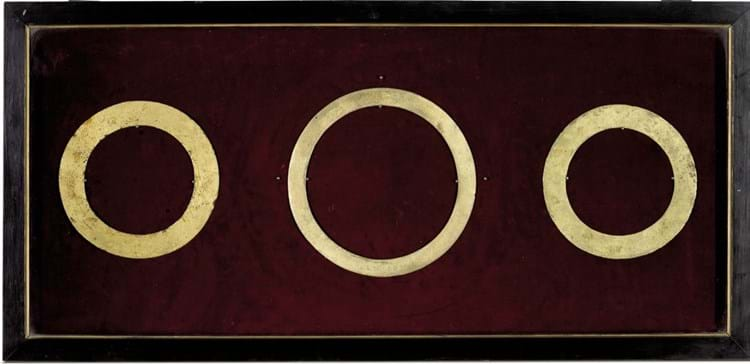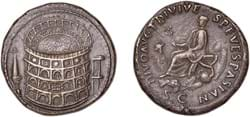These steel rings were Indian weapons with razor-sharp outer edges that were popular in the 18th century with Sikh warriors who would poise them on one finger, then send them flying through the air at their opponents. The quoits came in various diameters and could be worn on the wrist or carried in a turban.
For a 20th century equivalent, think, perhaps of Bond villain Oddjob with his razor-edged hat.
The three quoits above right featured in Sotheby’s eclectic auction of aristocratically associated items, Of Royal and Noble Descent, held in Bond Street on January 19.
They formed part of a 128-lot group from Coulston House, East Lothian, home of James Andrew Broun- Ramsay, Marquess of Dalhousie (1812-60).
Dalhousie was Governor General of India and garnered an impressive collection of Indian works of art. It is thought the quoits were either presented to him following the annexation of the Punjab, when the second Sikh war concluded in 1849, or were a war trophy. Sotheby’s sold a large slice of Indian arms and armour from Coulston in 1990 but these were not among them, having been retained by the family.
The three quoits were of different diameters: the central example measuring 9in (23cm) while the smaller is 7¾in (19cm). Sotheby’s specialist Thomas Williams thought the larger, heavier sharper-edged version was more likely 18th century and used as a weapon while the smaller, lighter ones probably dated to the 19th century when quoits became largely ceremonial objects.
He added that the case also had three pins in the centre, indicating the position of a fourth finely engraved ceremonial quoit which Dalhousie’s family returned to the illustrious Guru Gobind Singh.
Estimated at £1500-2500, a figure Williams admitted was conservative, they attracted considerable interest from Sikh bidders, pushing the price to £26,000 (plus 25% premium). While such pieces are relatively rare on the market, he reckoned it was the provenance which was key here.
“They had this amazing connection to the Punjab and to Sikh history and I think that’s what really resonated with our clients, particularly Sikh buyers.
“Sikh collectors are incredibly proud of their warrior heritage and this was a unique opportunity to buy something back that had unbroken provenance to the mid-19th century.”










